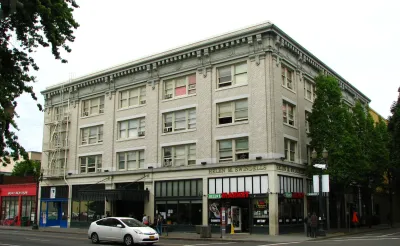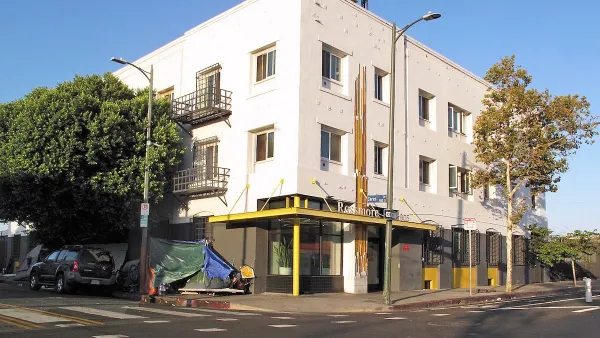Popular in the early 20th century, the rooming house fell out of favor, with the type now banned in many cities. With no end to the housing crisis in sight, cities are rethinking their regulation of this affordable housing option.

Single-room occupancy housing (SROs), which in the 1950s made up 10 percent of New York’s housing stock, could make a comeback as the housing crisis forces Americans to reconsider housing options that have fallen out of favor, writes Jake Blumgart for Governing.
Blumgart provides some background: “In 1955, New York City banned the new construction of SROs in the city. Zoning codes everywhere were tweaked to discourage anything but single-family residences. By one estimate, 1 million SRO units were lost between the 1970s and the 1990s.”
With the city receiving 500 complaints about illegal single-room occupancies each year, the demand for rooming houses is palpable in Philadelphia. One city councilmember wants to reverse that trend, calling on the city to “legalize single-room residences in all multifamily and commercial zoning districts.”
The bill isn’t without its critics in the council. “Multiple council sources have told Governing that three district councilmembers planned to introduce amendments to Green’s bill that would carve their neighborhoods out of his legislation. The bill still hasn’t been scheduled for a hearing, and council will soon break for the summer.”
Former head of Philadelphia’s Department of Licenses and Inspections (L&I), Dave Perri, has been advocating for zoning reform since 2018, when a fire in an illegal rooming house killed three people. Perri wants to see rooming houses allowed in all neighborhoods, arguing that single-family zoning no longer fits people’s needs. “He points to more single people living alone than in the past, overcrowded multi-generational households, and non-traditional family formation as pressures on the existing legal paradigm.” Single-room occupancy can fill a gap in the affordable housing supply and provide a lifeline for low-income renters.
FULL STORY: SRO Housing, Nearly Zoned Out of Existence, Could Re-Emerge

National Parks Layoffs Will Cause Communities to Lose Billions
Thousands of essential park workers were laid off this week, just before the busy spring break season.

Retro-silient?: America’s First “Eco-burb,” The Woodlands Turns 50
A master-planned community north of Houston offers lessons on green infrastructure and resilient design, but falls short of its founder’s lofty affordability and walkability goals.

Delivering for America Plan Will Downgrade Mail Service in at Least 49.5 Percent of Zip Codes
Republican and Democrat lawmakers criticize the plan for its disproportionate negative impact on rural communities.

Test News Post 1
This is a summary

Test News Headline 46
Test for the image on the front page.

Balancing Bombs and Butterflies: How the National Guard Protects a Rare Species
The National Guard at Fort Indiantown Gap uses GIS technology and land management strategies to balance military training with conservation efforts, ensuring the survival of the rare eastern regal fritillary butterfly.
Urban Design for Planners 1: Software Tools
This six-course series explores essential urban design concepts using open source software and equips planners with the tools they need to participate fully in the urban design process.
Planning for Universal Design
Learn the tools for implementing Universal Design in planning regulations.
EMC Planning Group, Inc.
Planetizen
Planetizen
Mpact (formerly Rail~Volution)
Great Falls Development Authority, Inc.
HUDs Office of Policy Development and Research
NYU Wagner Graduate School of Public Service





























